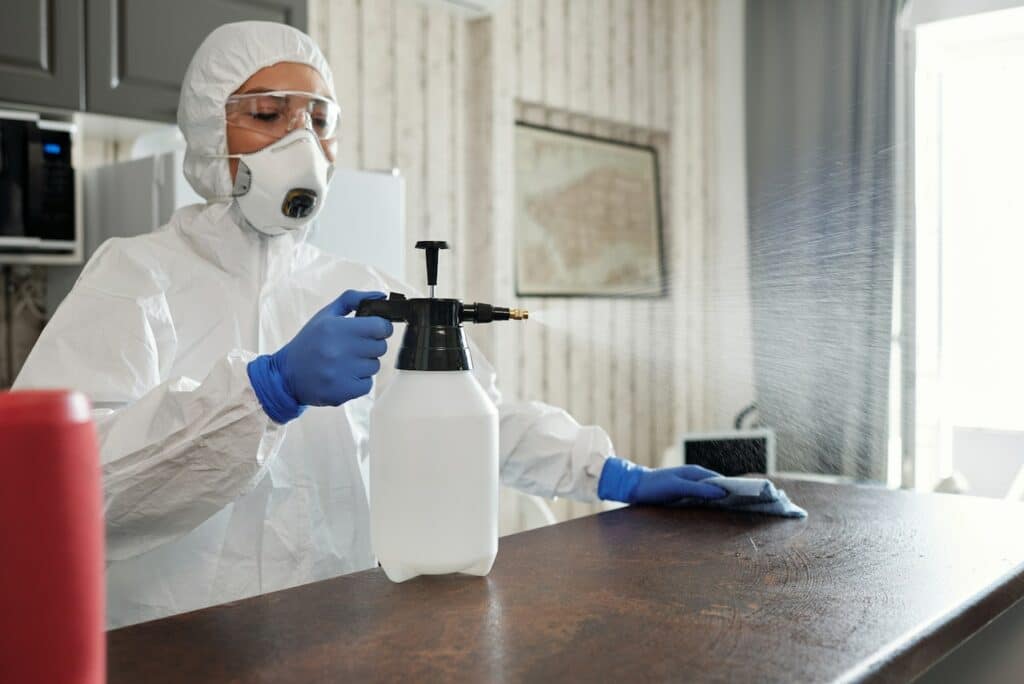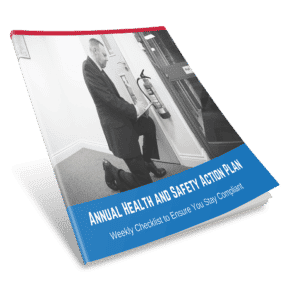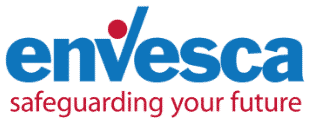
Keeping your team safe at work is paramount, especially when your people might be exposed to harmful substances.
But what is expected of you? How can you reduce the risks?
Chemical safety in the workplace can feel scary to navigate, and understanding the legal requirements and how you can maintain compliance is crucial.
Here, we cover the ins and outs for you.
What Is Chemical Safety?
Not all harmful substances are labelled as such, and many businesses expose their employees to chemicals that could pose health hazards.
Even wood dust and welding fumes can cause trouble!
Chemical safety is the practice of ensuring occupational chemical substances are used to reduce the risks posed to workers and protect their health and safety in the workplace. Efficient chemical safety practices also protect the environment from damage, too.
Chemical safety covers both natural and manufactured chemicals, including those created due to workplace processes involving safe materials. Regulations cover all opportunities for exposure, from hazardous chemicals in their natural environment to their extraction, production, transport use and disposal.
Organisations And Regulatory Bodies
No matter the size of your business, you’ll need to comply with health and safety legislation. There are multiple regulations governing chemical safety practices in the workplace. Let’s take a look.
REACH
REACH is an acronym used to describe the EU Commission’s new chemical strategy, and it stands for ‘Registration, Evaluation, Authorisation and Restriction of Chemicals’.
The policy applies to all chemical substances and items that have gone through processes involving them, from industrial chemicals to furniture and paint products. To comply with REACH, companies must identify the risks associated with the chemicals they manufacture and market in the EU. They must also communicate, manage and demonstrate risk management measures.
COSHH
COSHH stands for “Control of Substances Hazardous to Health”.
COSHH is a set of health and safety regulations that provide a legal framework to protect those working with hazardous substances. It describes how these substances should be handled, stored and worked with to reduce the risks and ensure staff members aren’t negatively impacted.
COMAH
The COMAH, or Control of Major Accident Hazards regulations, help businesses to implement measures that prevent major accidents with hazardous chemicals in the workplace.
COMAH shines a light on ensuring responsible people understand the risks and manage related processes efficiently and safely. The regulations are enforced by five public bodies that work together in partnership;
- The Environment Agency
- The Scottish Environment Protection Agency
- The Health And Safety Executive
- The Office for Nuclear Regulation
- Natural Resources Wales
CHIP
Manufacturers and suppliers of chemicals must comply with the Chemicals (Hazard Information and Packaging for Supply) CHIP Regulations. However, it’s important to note that CHIP is gradually being replaced by the European Regulation on Classification, Labelling and Packaging of Substances and Mixtures, or the CLP Regulation.
CHIP brings the responsibilities of suppliers of chemicals to the forefront, ensuring they identify hazards and provide appropriate packaging labels and safety data sheets for the chemicals they work with.
CDGR
The Carriage of Dangerous Goods Regulations place the duty of care upon all individuals involved in transporting dangerous goods. Everyone involved must know how they can reduce the risk of incidents and accidents.
Dangerous goods are assigned to different classes according to the damage they could cause. Hazardous goods travelling by road or rail, where there is a significant risk of traffic accidents, could lead to potentially disastrous events such as spillage, environmental damage, chemical burning, explosion and fire.
COSHH In The Workplace
COSHH regulations are the most important set of rules you’ll use in the workplace, providing clear guidelines on what must be done to achieve or maintain compliance.
Employer responsibilities include…
Exposure
Exposure to dangerous chemical substances must be controlled or prevented. An example of this is the provision of personal protective equipment or PPE.
Control Measures
Employers must implement control measures for hazardous substances. This means using control equipment such as total or partial enclosure, controlling ways of working and training to reduce or eradicate exposure, and changing how often a task is completed or reducing the number of employees nearby where possible.
Instruction
Education and instruction provide employees with sufficient information and training about how to work safely with hazardous chemicals.
Procedures
To efficiently protect staff members’ health and safety, employers must have procedures in place that give clear instructions on what to do in the face of accidents and emergencies involving hazardous substances.
Surveillance
We’re not talking CCTV. Rather, employees known to be exposed to dangerous chemical substances should be under adequate, consistent surveillance to prevent or limit harm.
Risk Assessments
Carrying out COSHH risk assessments once hazardous substances have been identified means employers can address each chemical and put proper processes into place to ensure their people are kept safe and their business isn’t left liable to prosecution under COSHH regulations.
Limits
The Workplace Exposure Limit describes an upper limit on the concentration of hazardous chemicals in the air. Employers must make sure the use of hazardous substances in their workplace doesn’t mean the WEL is exceeded.
Supervision
It’s within the remit of the employers to check employees are carrying out tasks as they are supposed to.
But it’s not all down to the employers. Here are the employee responsibilities according to COSHH legislation…
Safety
Employees have the responsibility to see that tasks are carried out safely, including assisting and supporting colleagues to do the same.
Procedures
Processes and procedures are there for a reason, and it’s up to employees to follow them.
PPE
It’s the duty of the employee to wear correct PPE, including eye and ear protection, and store it safely in between use.
Reporting
Reporting and recording all accidents, incidents, spillages, and breakages is a vital part of COSHH guidelines.
Checkups
Employees are required to attend medical check-ups when required.
Cleaning
All employees must make proper use of cleaning and showering facilities in line with health and safety procedures.
Training
It’s not just the duty of the employer to maintain sufficient levels of training among their teams of people. Employees must also strive to keep up to date with training requirements.

Enforcement And Penalties
Employers who fail to prevent or significantly reduce exposure to all of the hazardous substances in their workplace put their staff at risk of harm and their businesses at risk of serious legal repercussions.
Workers who have been exposed to serious health risks could develop life-changing medical issues and diseases, and employers may be subject to costly fines or even prison sentences for breaches.
The severity of the breach and the harm that has taken place are both factors that determine the extent of a fine or prison sentence for the employer.
Let’s look at a couple of examples.
A car body shop was fined £20,000 for failing to adequately protect staff members from the noxious fumes of isocyanate paints, a substance that can cause occupational asthma.
Workers at a Bristol-based company were exposed to dangerous chemicals over 4 years, leading to a heavy onset of allergic contact dermatitis, a condition that causes the skin to blister, crack and weep. This company was fined a total of £100,000 and had to stump up £30,000 to cover costs.
Chemical Safety Precautions Protect Your People And Your Business
Staying safe in the workplace is key to keeping your workforce from harm, but it also holds your business clear of potentially devastating regulation breaches.
Does your company deal with potentially hazardous substances? Get in touch to find out how we can help you retain full compliance.
Find this helpful?
Signup to our email notifications to receive alerts when we publish new blogs. We promise not to spam your inbox, you will just get a short snappy intro to Health and Safety articles we think you will love.
"*" indicates required fields

Annual Health and Safety Action Plan
If you’ve got a question or query, please contact our super friendly team, they will be delighted to help you!
Simply get in touch via phone or email.

Free
Resources &
Downloads
Informative. Useful. Practical.
Here at Envesca we believe that we are good at giving proactive, sensible and useful advice. Below you will find some free resources that you can download on a host of subjects that will help you and your business.
Training Available
Envesca offer a number of different training courses, which offer advice and guidance on these topics.






